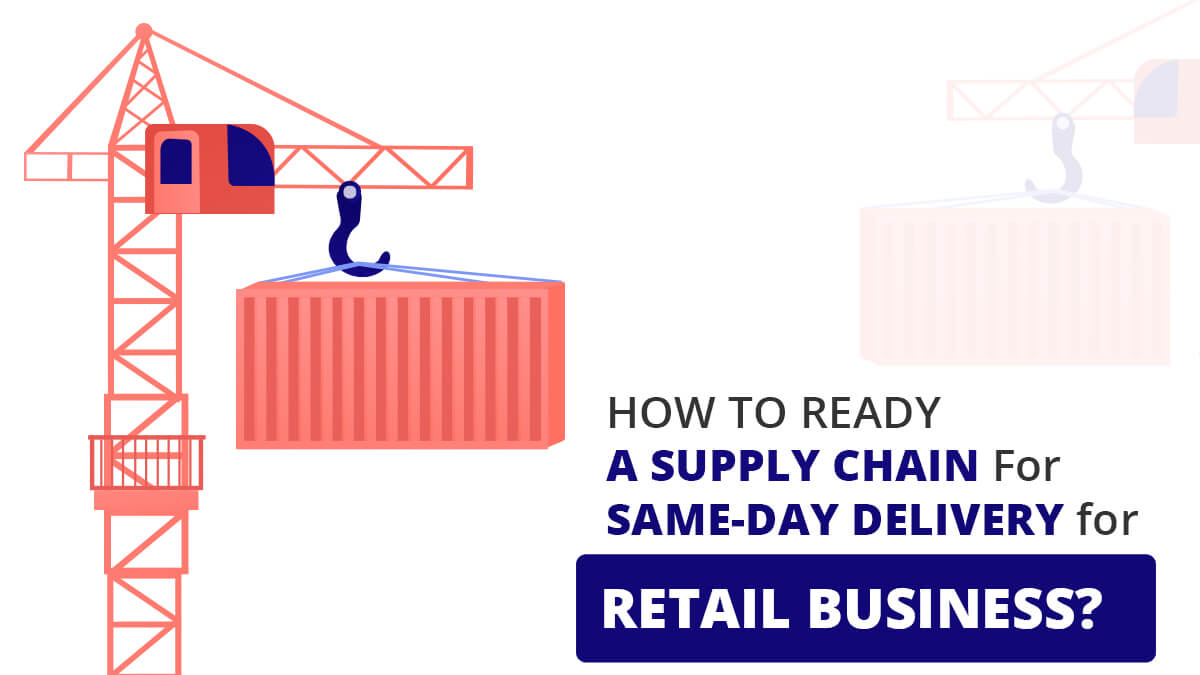Over half of all North American retailers now offer same-day delivery. The reasons for this are clear: According to a 2018 global survey from PwC, 88% of consumers are willing to pay for same-day (or faster) delivery.

Catering to this demand is highly effective. Retailers that provide same-day delivery can increase sales and conversion rates. This being the case, it’s no surprise that more and more businesses are gearing up to offer same-day delivery. This is not something they can roll out overnight, however. Read on to find out what’s needed to ready a supply chain for same-day delivery.
1. Auditing The Supply Chain
Before undertaking such a significant project, it’s important to carry out a supply chain audit. By monitoring the performance of a supply chain and identifying any shortcomings in how it operates, a clearer picture will emerge of what needs to be changed to speed things up.
Read more How much does it Cost to Build an Online Marketplace App?
You can approach a supply chain audit in several different ways. This can include measuring the accuracy of deliveries or assessing the performance of distribution center workers. Retail and Asset Solutions (formerly called OCS Retail Support) argues that the latter is especially important. It notes that “with today’s vast retail sector relying on customer availability as a key sales driver, distribution centers providing an accurate and efficient service to their stores are a key part of the supply chain process.”
Enlisting a company to audit the distribution center is a great way of ensuring this is working to its optimum level. Another common auditing measure is to spot-check vehicles. This establishes whether a stock is being loaded onto vehicles properly and whether orders are being carried out correctly. These tests identify errors in the supply chain and enable performance report generation, making the path to peak optimization clearer.
2. Finding a More Efficient Distribution Model
Depending on the findings of the audit, it might be best for a business to switch to a new distribution model altogether. Many organizations rely on the hub-and-spoke distribution model. This includes retailer Argos, who was one of the first major UK companies to offer a same-day delivery service.
Hub-and-spoke systems provide companies with a combination of major distribution centers and cross-docking facilities situated near their customers, rather than a central warehouse. With a hub-and-spoke model, drivers can make timely runs between suppliers, distribution centers, and cross-docks based on predicted demand to help mitigate the transport expense of same-day delivery.
Read more : How Mobile App Development Technology Is Changing The Face Of Transportation
It could also be worth partnering with third-party logistics providers (3PLs). By outsourcing to 3PLs to ship certain orders on a company’s behalf, resources can be better allocated. A huge advantage of doing this is that it enables businesses to test the demand and success of same-day delivery without a hefty upfront investment or long-term commitment.
3. Preparing The Warehouse
Businesses must prepare their warehouses when upgrading their supply chain for same-day delivery. Implementing a more effective warehouse management system (WMS) is essential. Many companies look to a short-interval waving WMS, as this technology is very useful for enabling managers to better coordinate a warehouse.
Short-interval waving assigns batches of orders into small intervals called “waves.” These simulate a day’s workflow, based on order characteristics, the order departure plan, labor, and equipment constraints. Only when a satisfactory plan is created will the WMS accept it, then release waves throughout the day. This technology enables managers to coordinate the activities needed to achieve same-day delivery of a large number of items.
Another way to prepare a warehouse for same-day delivery is to invest in customization software. Another type of WMS, cartonization works by evaluating items in an order to determine the number and size of shipping cartons needed.
The weight, height, length, and width of each item are used to calculate how to pack each carton. This enables warehouses to have a much faster packaging turnaround so they can get orders out the door quicker.
Following the recommendations above will help make same-day delivery (and the rewards it should bring) a reality for businesses.
Originally published on digitalistmag.com in Digital Supply Networks Area

